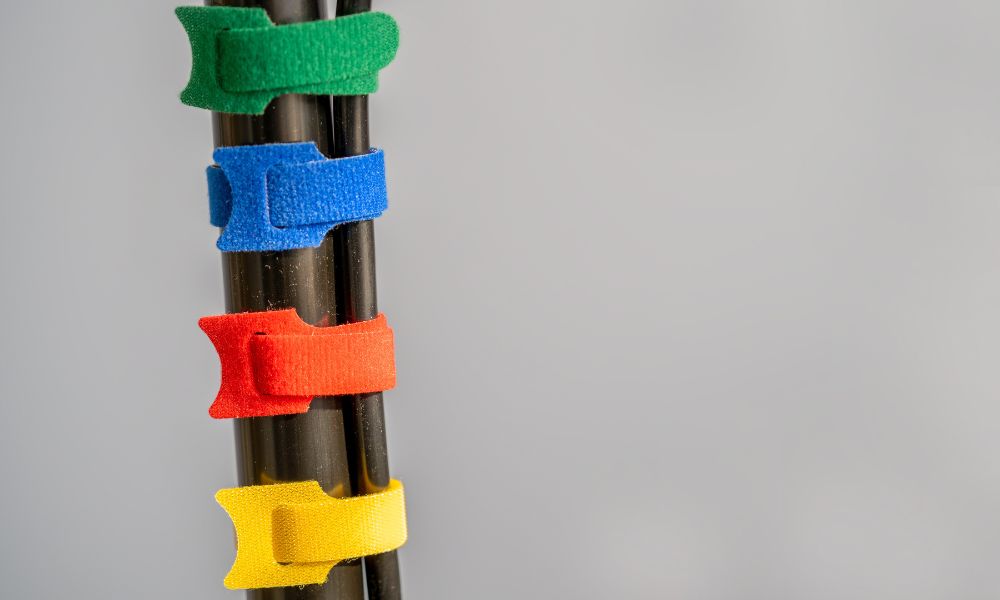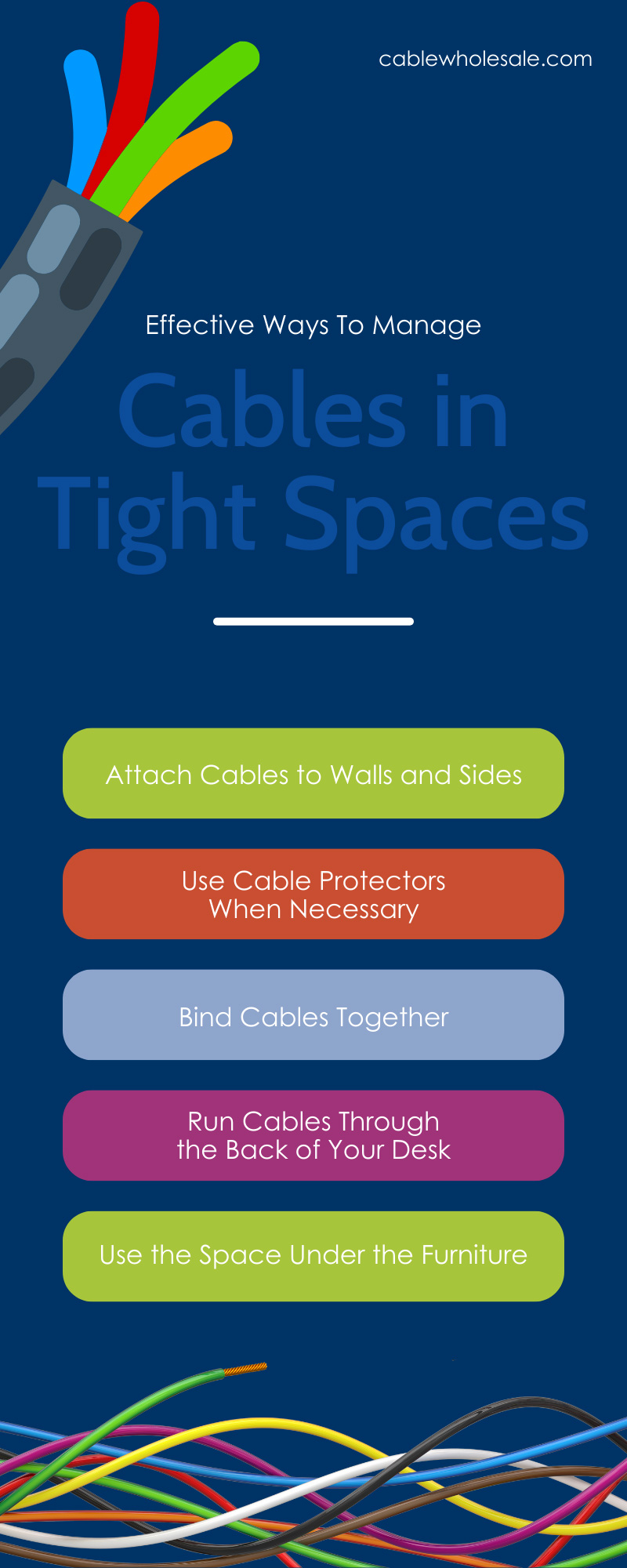
Cable management is an important part of your workspace, and you need to stay consistent in how you arrange your cords. However, if you reside in a small space, you’ll find that creating an organized system of cables is challenging, but it’s not impossible when you have the right knowledge. Use these effective ways to manage your cables in tight spaces without having them running along the floor.
Attach Cables to Walls and Sides
Long cables will easily become a problem as they lie across the floor without anything to hold them down. Every time you stumble or kick the cables, they will move out of position. So keep them in place by attaching them to the walls and sides of the furniture.
Tape the cables to the baseboard to keep them out of the way, or run them along the side of your desk to make them easier to track when you need to replace or move them. Cable hooks will help you hang the cable and prevent the majority of its length from lying on the floor.
Keep Power Sources Out of Sight
If you have numerous powered devices, you’ll benefit from keeping the power source in a hidden position. As most office spaces use surge protectors or extension cords, you’ll have another object with an attached cable that needs management. Attaching the power source to the bottom of your desk will make cable management easier by having the source in a spot that’s easier to locate.
The cables plugged into them are easier to track since you know the source, and unplugging them is easier. It’s best to attach them to the walls and sides of the room to keep the cables tidy and out of the way.
Use Cable Protectors When Necessary
Sometimes, you can’t help but run a few cables across the floor to connect them to another source. If you have to leave a cable exposed, it’s best to use a cable protector to prevent someone from stepping on it. While the cable jacket will protect the wiring from heat and moisture, you could still damage it by putting your weight on it.
Use protectors to shield the cable without creating a large obstruction in the middle of the floor. Since you’re in a tight space, having a large object in the middle of the floor would make maneuvering challenging, but since the protector is typically flat with only a slight hump, you’ll have an easier time stepping over or on it if needed.
Color Coordinate Your Cables
When there are dozens of cables in your office setup, you may have a challenging time keeping track of where they lead. Following them from the source will help, but if they have similar colors and intertwine in different areas, you won’t be able to keep track. Luckily, there’s a solution. Color-coordinate your cables to make cable management simpler.
Use different colored tape to identify which cables are which and organize where each one should go. This method is effective if you have a large tangle of cords that have developed a knot over the years. Pulling on the cable with colored tape will make locating their source easier.
Bind Cables Together
Loose cables lead to poor cable management, and the small confines of your office space will look less put together. Binding cables with tape or zip ties will help you keep the workspace tidy and prevent loose cables from getting in the way.
Zip ties are an effective tool in binding the long strands of cables stemming from different devices. A cable sleeve is also an effective tool for binding them and will help you corral your cables.
Binding Cables by Source
Binding cables by their source will help you manage them and prevent them from separating, even as they connect to different devices.
You may have a coax cable running to the wall while an HDMI cable runs to the monitor. You’ll still need to bind them, as their source is the PC.
Run Cables Through the Back of Your Desk
There isn’t much room for flexibility in how you run your cables in a tight space. If the space is so small that you only have room for the desk and your chair, you may need to get creative by running the cable through the back of your desk.
Most desks will have a thin back that a box cutter can cut a hole into. Use this hole to lead the cable behind the desk and down. Using this path is an effective way of managing cables in a tight space, and it will keep them out of sight.
Keep All Cables Laying Flat
If cables have a gap between them and the ground, it presents a tripping hazard. Safety is essential to cable management, especially in a tight space where you won’t have as much mobility.
Use various methods to keep cables as flat on the floor as possible. Ensuring they only rise when nearing an elevated device will prevent you from tripping and keep your cables connected.
Use Shorter Cables
A short cable will also prevent tripping since the cable won’t have enough length to slacken. Cables have a variety of different lengths, from two feet to over 500 feet. Keep your cable connection in mind when using shorter options; you’ll still need to connect to devices in your small office.
Use the Space Under the Furniture
Making good use of the other furniture in the room will help you maintain your cables. A chair or small table will have space underneath to run the cable through.
The cables will remain out of sight and out of the way, and you’ll still have access to your furniture pieces.
It’s not easy working in a tight space with numerous cables laid out in different directions. Use these ways to effectively manage your cables and clean up your tight space. You’ll enjoy the way your small office looks after you’ve organized your cables.




